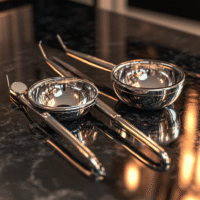Understanding the Study
This study looked at how biting on a cotton roll can help reduce pain when removing metal brackets from teeth during orthodontic treatment. This was compared to the traditional method where patients just keep their mouths open.
What Worked?
- Biting on a cotton roll significantly reduced pain during the bracket removal procedure.
- Patients who bit on the cotton roll reported lower pain levels, especially in the front teeth areas (incisors).
What Didn’t Work?
- There was no difference in pain perception based on gender; both males and females experienced similar levels of pain.
How This Helps Patients and Clinics
- Patients can experience less discomfort during bracket removal, making the process more pleasant.
- Clinics can improve patient satisfaction by adopting this simple technique, leading to a better overall experience.
Real-World Opportunities
- Dental practices can train staff to use cotton rolls during bracket removal as a standard procedure.
- Clinics may consider conducting follow-up surveys to gather patient feedback on pain management techniques.
Measurable Outcomes
- Track patient pain levels using a simple scale before and after implementing the cotton roll method.
- Monitor patient satisfaction scores related to pain management during dental procedures.
AI Tools to Consider
- Use AI-powered patient feedback tools to collect and analyze data on pain experiences during procedures.
- Implement AI scheduling tools to manage appointments efficiently, reducing wait times and stress for patients.
Step-by-Step Plan for Clinics
- Start by educating your team about the benefits of using cotton rolls during bracket removal.
- Begin implementing this technique with a small group of patients to see how it works in practice.
- Gather feedback from these patients about their pain levels and overall experience.
- Refine the approach based on patient feedback and expand it to all bracket removal procedures.
- Continuously track pain levels and patient satisfaction to ensure ongoing improvements.



























